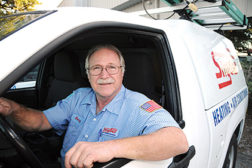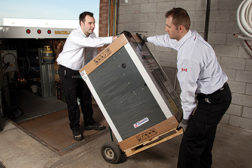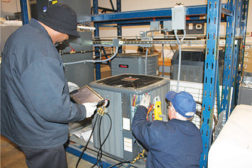Home » training technicians
Articles Tagged with ''training technicians''
Ductless Demands Proper Training
Manufacturers and Contractors Take Advantage of Online Tools, Resources
Read More
Properly Balancing the Ratio of Journeymen to Apprentices
Worker-Apprentice Ratio Varies Significantly Between U.S. and Canada
Read More
Snyder’s Commitment to Training Ranks it One of the Best in 2014
Jacksonville, Florida, Contractor Focuses on Educating and Mentoring Employees
Read More
HVACR & Mechanical Conference Returns
March Event Provides Free Educational Sessions to Industry Educators and Trainers
January 19, 2015
Group Looks to Combat Workforce Problems
Workforce Development Foundation Battles Skilled HVAC Worker Shortage
Read More
European Legislation Landscape Won't Get Any Easier, Says New HEVAC President
HVAC Industry Needs to Tackle the Skills Shortage to Meet the Challenge of Tougher Regulations and Standards
Read More
Today’s HVAC Instruction Bucks Tradition
Classrooms Feature Mix of Traditional, Online Learning Techniques
Read More
Copyright ©2024. All Rights Reserved BNP Media.
Design, CMS, Hosting & Web Development :: ePublishing













